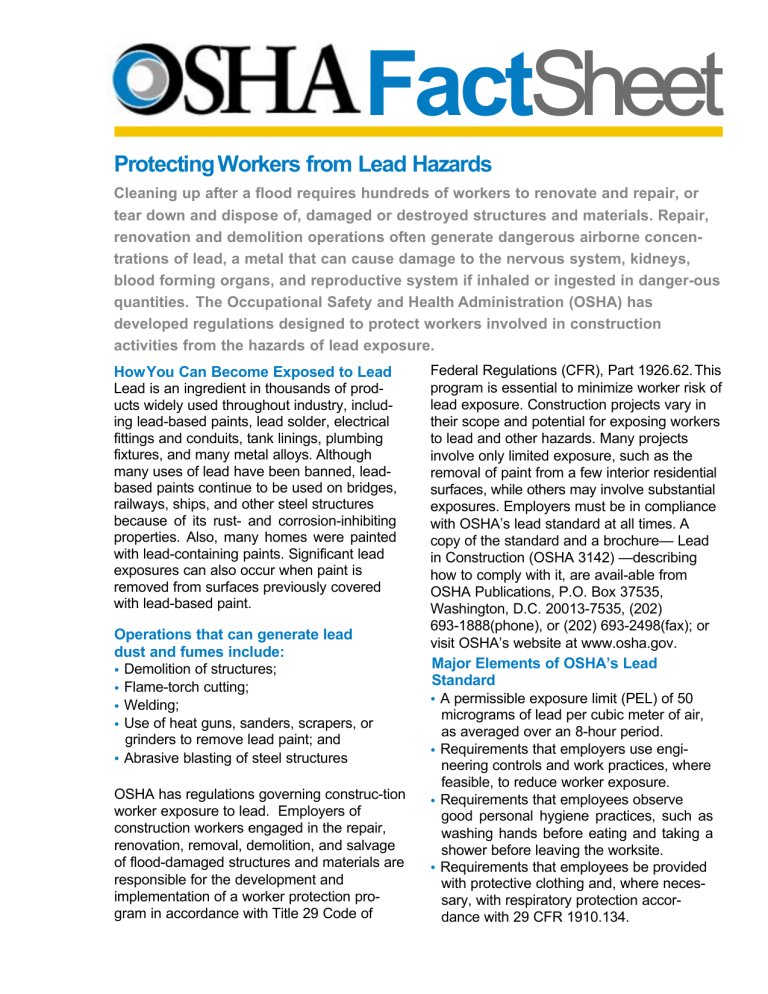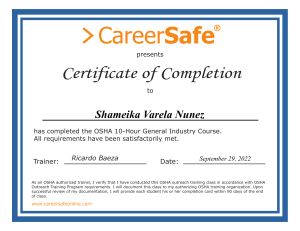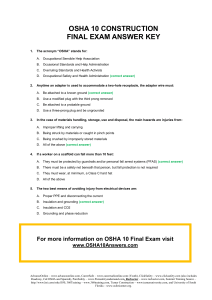
FactSheet Protecting Workers from Lead Hazards Cleaning up after a flood requires hundreds of workers to renovate and repair, or tear down and dispose of, damaged or destroyed structures and materials. Repair, renovation and demolition operations often generate dangerous airborne concentrations of lead, a metal that can cause damage to the nervous system, kidneys, blood forming organs, and reproductive system if inhaled or ingested in danger-ous quantities. The Occupational Safety and Health Administration (OSHA) has developed regulations designed to protect workers involved in construction activities from the hazards of lead exposure. How You Can Become Exposed to Lead Lead is an ingredient in thousands of products widely used throughout industry, including lead-based paints, lead solder, electrical fittings and conduits, tank linings, plumbing fixtures, and many metal alloys. Although many uses of lead have been banned, leadbased paints continue to be used on bridges, railways, ships, and other steel structures because of its rust- and corrosion-inhibiting properties. Also, many homes were painted with lead-containing paints. Significant lead exposures can also occur when paint is removed from surfaces previously covered with lead-based paint. Operations that can generate lead dust and fumes include: • Demolition of structures; • Flame-torch cutting; • Welding; • Use of heat guns, sanders, scrapers, or grinders to remove lead paint; and • Abrasive blasting of steel structures OSHA has regulations governing construc-tion worker exposure to lead. Employers of construction workers engaged in the repair, renovation, removal, demolition, and salvage of flood-damaged structures and materials are responsible for the development and implementation of a worker protection program in accordance with Title 29 Code of Federal Regulations (CFR), Part 1926.62. This program is essential to minimize worker risk of lead exposure. Construction projects vary in their scope and potential for exposing workers to lead and other hazards. Many projects involve only limited exposure, such as the removal of paint from a few interior residential surfaces, while others may involve substantial exposures. Employers must be in compliance with OSHA’s lead standard at all times. A copy of the standard and a brochure— Lead in Construction (OSHA 3142) —describing how to comply with it, are avail-able from OSHA Publications, P.O. Box 37535, Washington, D.C. 20013-7535, (202) 693-1888(phone), or (202) 693-2498(fax); or visit OSHA’s website at www.osha.gov. Major Elements of OSHA’s Lead Standard • A permissible exposure limit (PEL) of 50 micrograms of lead per cubic meter of air, as averaged over an 8-hour period. • Requirements that employers use engineering controls and work practices, where feasible, to reduce worker exposure. • Requirements that employees observe good personal hygiene practices, such as washing hands before eating and taking a shower before leaving the worksite. • Requirements that employees be provided with protective clothing and, where necessary, with respiratory protection accordance with 29 CFR 1910.134. • A requirement that employees exposed to high levels of lead be enrolled in a medical surveillance program. Additional Information For more information on this, and other health-related issues impacting workers, visit OSHA’s Web site at www.osha.gov. This is one in a series of informational fact sheets highlighting OSHA programs, policies or standards. It does not impose any new compliance requirements. For a comprehensive list of compliance requirements of OSHA standards or regulations, refer to Title 29 of the Code of Federal Regulations. This information will be made available to sensory impaired individuals upon request. The voice phone is (202) 693-1999; teletypewriter (TTY) number: (877) 889-5627. For more complete information: U.S. Department of Labor www.osha.gov (800) 321-OSHA DSTM 11/2005


